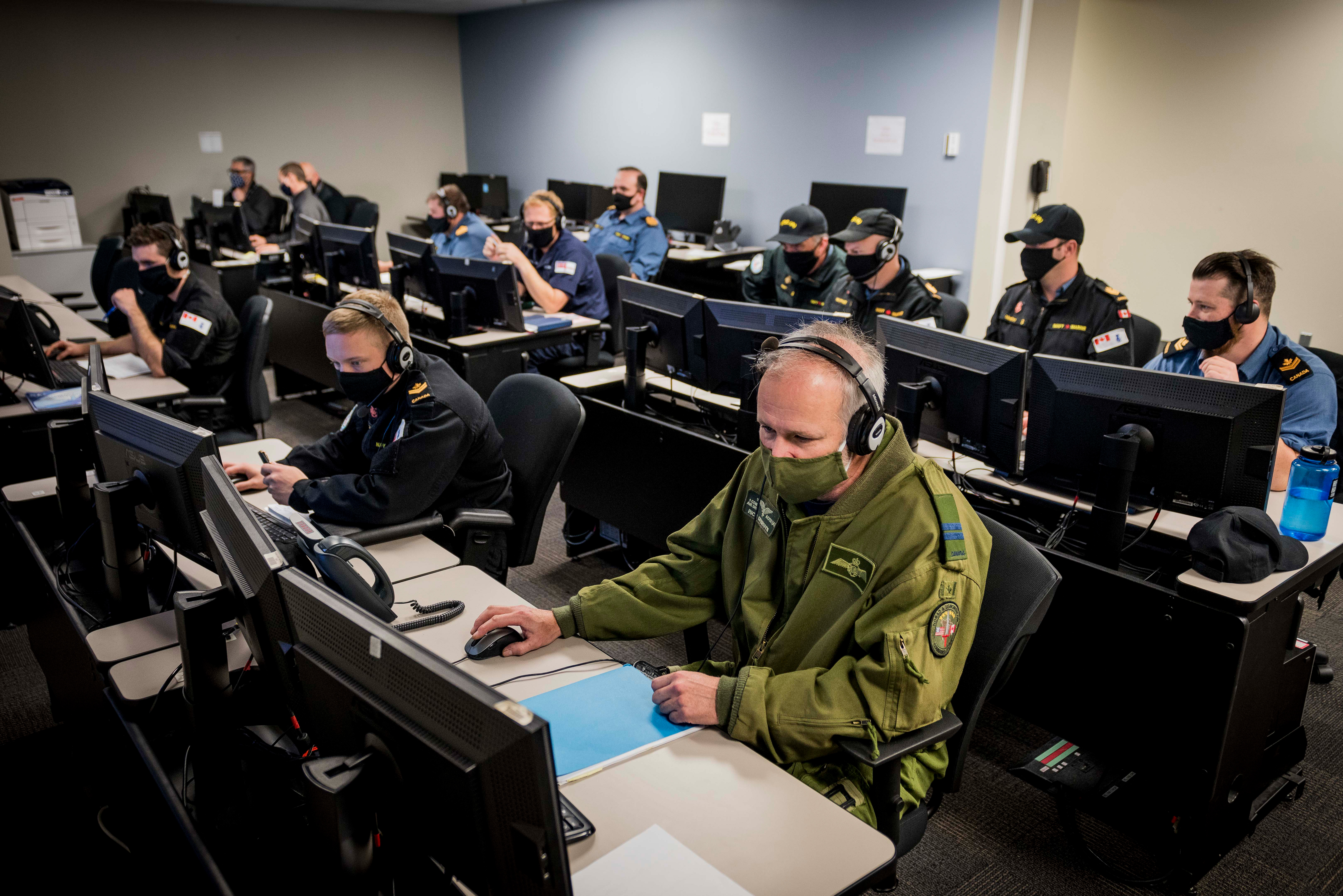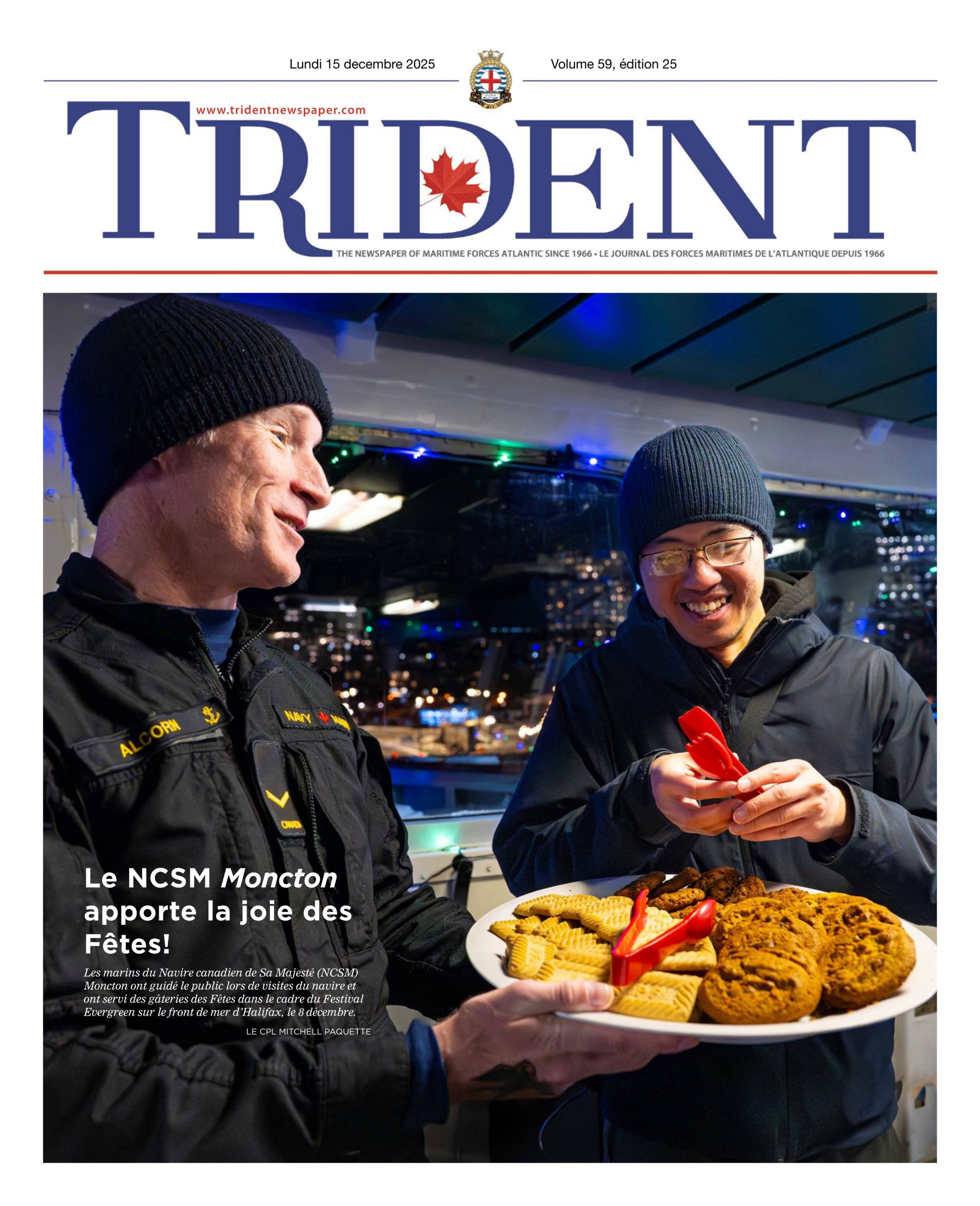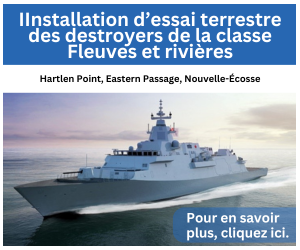
MCPL GERALD CORMIER, CAF PHOTO
CAF participates in remote Exercise Coalition Virtual Flag
By Lt(N) Peter Bigelow,
NTDC(A)
“Working remotely” may be a new and welcome term most of our society is starting to discover but the Canadian Armed Forces (CAF), along with our international allies, have been exercising this capability for years, and it is only getting stronger. This can be found most recently by the execution of Exercise Coalition Virtual Flag (CVF) 21-1. Virtual Flag is an annual United States Air Force (USAF) led exercise that just recently ran for nearly two weeks, from the 27. of October to the 5. of November.
While the exercise was hosted at Kirkland AFB in Albuquerque, New Mexico, 3,740 km away from the entrance of S17, RCN participants didn’t have to leave their area code in order to participate because, as the name implies, it was virtual. You can think of it as a massive online video game, but for numerous Allied militaries.
This year’s Virtual Flag included a wide range of CAF participants including 14 Wing Greenwood, 12 Wing Shearwater, 8 Wing Trenton and Naval Training Development Center Atlantic (NTDC(A)). Overall, there were more than 450 joint and coalition warfighters involved, as well as numerous surface and subsurface units. All these warfighters were being controlled from 23 different sites spanning three continents. Keep this in mind next time you’re impressed by a 12 person Zoom meeting.
There has been an ever-increasing utilization of Synthetic Training (ST) within not just the Royal Canadian Navy (RCN) and the CAF as a whole, but also by our close allies. The purpose of CVF 21-1 and other virtual exercises is to allow units to maintain and refine core warfighting capabilities without being hindered by logistics and engineering issues. Participants can obtain the benefits which have traditionally only been afforded by sending ships and aircraft to sea for weeks on end, by simply showing up to a building near their home. It now becomes a regular working day and everyone returns for supper with their loved ones every evening.
Another fantastic benefit is that there are fewer moving parts running in the background during Synthetic Training. On a ship or aircraft, the number of things that can go wrong and hinder the objectives of the exercise are endless, and the spectrum of possible complications is as wide as the ocean we virtually occupy. With Synthetic Training, there are issues that can arise, as we experienced, but nothing that the hard working individuals involved in running the Distributed Mission Operation Centre (DMOC) can’t quickly rectify.
The value of this exercise is not simply limited to strengthening the Battle Rhythm while sitting in the seat and doing the business. It offers the opportunity to plan a Task Group Exercise with Allied countries that mimics what we would have to do in real life. All the pieces don’t just magically come together, sailors and aircrew still have to prepare everything as if it was actually occurring in the Pacific Ocean or whatever theatre we choose. Upon the completion of a ST run, participants conduct a post exercise meeting or “hot wash up” and discuss what transpired, lessons learned and what to expect for the next day’s run. This may not seem overly important but teleconference meetings before and afterwards have the added value of strengthening the personal bond between members of different units and nations. The simple act of conversing allows us all to learn from one another, better understand each other and ultimately strengthens the ties between allies.
This is just the start. As technology improves, and the need to strengthen ties with fellow NATO nations and beyond becomes more and more important, Synthetic Training will undoubtedly continue to expand. The ability to hold more comprehensive virtual exercises with even more participants will allow the RCN and the CAF as a whole to effectively and efficiently focus on Shared Training as well as Tactics and Procedures, enabling Canada and our allies to work even better together in pursuit of common objectives.






